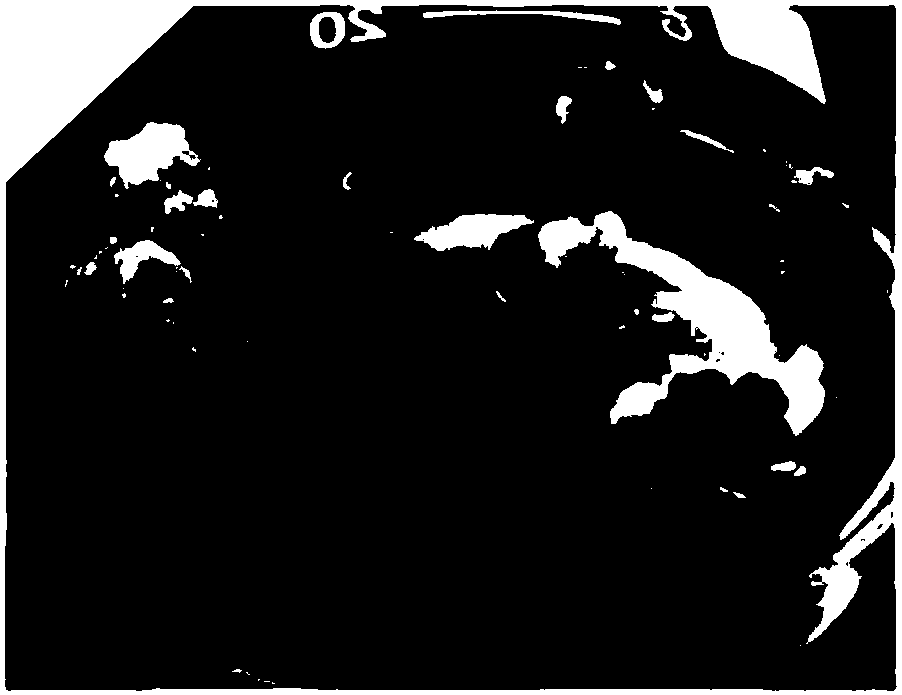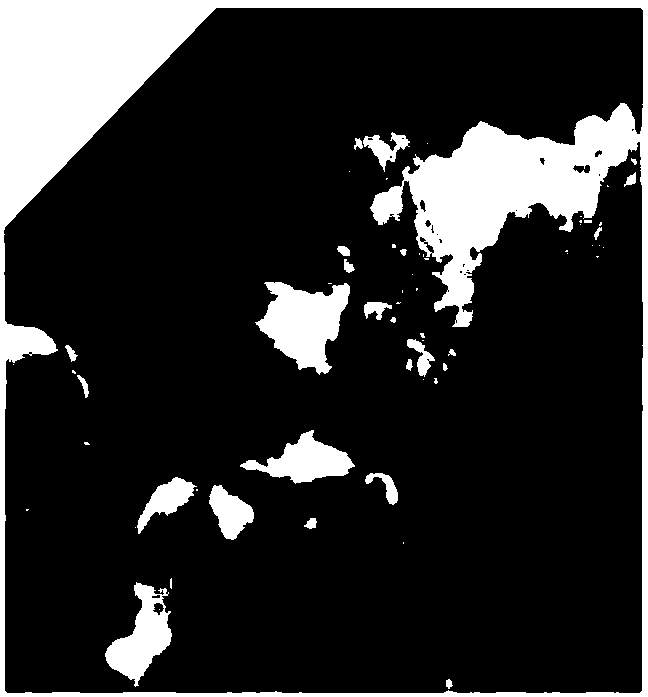Dendrocalamus farinosus breeding method through in-vitro induced mutation by using ethylmethane sulfonate
A technology of ethyl methanesulfonate and mutants, applied in the directions of horticultural methods, botanical equipment and methods, applications, etc., and can solve problems such as unseen mutation breeding
- Summary
- Abstract
- Description
- Claims
- Application Information
AI Technical Summary
Problems solved by technology
Method used
Image
Examples
Embodiment 1
[0068] Embodiment 1, preparation bamboo callus
[0069] 1. Preparation of explants
[0070] 1. Take the young side branches of Cizhu liangshan, remove the leaf sheaths, and then carry out the following disinfection steps in sequence: wash with 70% ethanol aqueous solution, then rinse with running water, then soak for 30 sec with 70% ethanol aqueous solution, then fully clean with sterile water, Then with 0.1% HgCl 2 The aqueous solution was disinfected for 10 minutes, and then fully rinsed with sterile water.
[0071] 2. After completing step 1, take side branches and cut them into stem segments with a length of 1±0.2cm (each stem segment has at least one node).
[0072] 2. Preparation of callus (the culture temperature in the whole process is 25±2°C)
[0073] 1. Take the stem segment obtained in step 1, inoculate it on the callus induction medium, cultivate it for 2 weeks (dark culture), and then cultivate it for 6-8 weeks (16 hours of light per day) to obtain callus.
[...
Embodiment 2
[0079] Embodiment 2, utilization of ethyl methanesulfonate in vitro mutagenesis of Cizhu liangshan
[0080] 1. Prepare pH 4.8, 0.01M phosphate buffer, autoclave and cool to room temperature.
[0081] 2. Take ethyl methanesulfonate, filter and sterilize with a 0.22 μm microporous membrane.
[0082] 3. Take the ethyl methanesulfonate obtained in step 2 and dilute it with the phosphate buffer obtained in step 1 to obtain an ethyl methanesulfonate solution.
[0083] In the ethyl methanesulfonate solution, the volume percent content of ethyl methanesulfonate is 0.6%, 0.8% or 1.0%, respectively.
[0084] 4. Take the callus obtained in Example 1 (the number is n1), place it in ethyl methanesulfonate solution, and shake it for 30 minutes.
[0085] 5. After completing step 4, take the callus and rinse it with sterile water.
[0086] 6. After step 5 is completed, the callus is taken, inoculated into the cluster bud differentiation medium, and cultured until the cluster shoots grow ou...
Embodiment 3
[0104] Example 3. Analysis of Mutagenized Progeny Using ISSR Molecular Marker Technology
[0105] From the 96 regenerated plants obtained after mutagenesis with 0.6% ethyl methanesulfonate solution in Example 2, 47 were randomly selected as candidate mutants.
[0106] Each candidate mutant strain and control strain were analyzed by ISSR molecular marker technology.
[0107] 1. Take leaves and extract genomic DNA.
[0108] 2. Using the genomic DNA obtained in step 1 as a template, carry out ISSR-PCR amplification with ISSR primers.
[0109] The 14 ISSR primers in Table 2 were used respectively. In Table 2, Y stands for C or T, R stands for A or G, B stands for C or G or T, D stands for A or G or T, and S stands for G or C.
[0110] Table 2
[0111] Primer name
Primer sequence (5'-3')
ISSR-A
AGAGAGAGAGAGAGAGYA
ISSR-B
GAGAGAGAGAGAGAGAYC
ISSR-C (Sequence 1 of the Sequence Listing)
CTCTCTCTCTCTCTCTCTRC
ISSR-D (Sequence 2 of t...
PUM
| Property | Measurement | Unit |
|---|---|---|
| Length | aaaaa | aaaaa |
| Average width | aaaaa | aaaaa |
Abstract
Description
Claims
Application Information
 Login to View More
Login to View More - R&D
- Intellectual Property
- Life Sciences
- Materials
- Tech Scout
- Unparalleled Data Quality
- Higher Quality Content
- 60% Fewer Hallucinations
Browse by: Latest US Patents, China's latest patents, Technical Efficacy Thesaurus, Application Domain, Technology Topic, Popular Technical Reports.
© 2025 PatSnap. All rights reserved.Legal|Privacy policy|Modern Slavery Act Transparency Statement|Sitemap|About US| Contact US: help@patsnap.com



